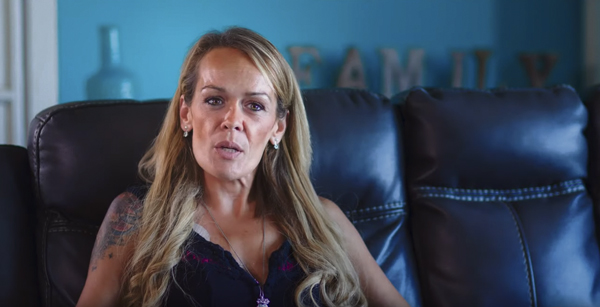
Raeleen Minchuk Prokopetz is dying.
The Saskatchewan resident was diagnosed with stage four mesothelioma about five years ago.
A mesothelioma is a form of cancer that often shows up in people who have been exposed to asbestos. That’s how Minchuk Prokopetz acquired the disease.
“I am palliative,” she said in a video released by WorkSafe Saskatchewan.
“Every side effect that can hit you out of chemo hit me, and it hit me like a ton of bricks. I ended up in the hospital after every chemo treatment having blood transfusions, and the nausea was really bad.”
Minchuk Prokopetz traces her exposure to asbestos tor 1979 when her dad was putting a new addition on her grandparent’s old 1950s era home.
“Because I was there all the time. I crawled around in the dust and my fingers went to my mouth and unfortunately I swallowed, inadvertently swallowing tiny asbestos fibres,” she said.
“About 35 years later, my worst nightmare came true. My younger son took it really hard. I remember looking at him and saying ‘if Mom could save just one life than mom’s done her job and that’s all that matters.’
“He doesn’t see it that way. His reality is you’re taking my mom and it’s not right.”
The video featuring Minchuk Prokopetz telling her story is part of WorkSafe Saskatchewan’s new asbestos awareness campaign.
According to a press release issued Tuesday, Asbestos-related diseases are the leading cause of work-related deaths in Saskatchewan.
They accounted for 28 per cent of the 3888 work-related deaths in the province from 2009-2018.
“This is why WorkSafe Saskatchewan – the partnership between the WCB and the Ministry of Labour Relations and Workplace Safety – has a provincial awareness campaign underway to educate the public on the danger of asbestos,” the organization said in a press release.
“Many homes and buildings in Saskatchewan were built before 1990, so they might contain asbestos. This means contractors and homeowners planning renovations could be putting themselves at risk of asbestos exposure if they don’t take the proper steps before starting a construction project.”
Asbestos is a naturally-occurring form of fibrous silicate minerals. It was mined and then milled for its fibres. Before the mid-1990s, asbestos was used in over 3,000 different products. Out of these, 70 per cent were construction materials, including flooring products, plaster, drywall joint compound, insulation, fireproofing and acoustic ceiling tiles.
“If it isn’t made of wood, glass or metal, it is suspect to contain asbestos,” WorkSafe says in an FAQ on its website.
When asbestos is disturbed, it releases its small fibres into the air. Those fibres can cause lung cancer, asbestosis and mesothelioma, which is a form of cancer affecting the abdominal and chest walls.
“Many people don’t realize they might have asbestos in their building and homes and could be inadvertently exposed to the substance during renovations,” said Kevin Mooney, the WCB’s interim vice-president of prevention and employer services in a press release.
“Lack of identification and improper handling of asbestos before and during construction projects are causing unnecessary asbestos exposure. Our goal is to minimize that exposure, which becomes hazardous when it’s disturbed.”
The purpose of the campaign, launched this week, is to remind and educate contractors and homeowners that asbestos is still an issue.
“We want to remind and educate construction contractors and homeowners that asbestos is still an issue,” said Mooney. “If you take proper steps before starting any construction project, you can protect yourself and others from asbestos exposure. Asbestos-related lung diseases are preventable.”
Before anyone, contractor or homeowner, begins renovation works, they should hire a professional abatement team to identify and remove asbestos from a home or workplace, Mooney added.
The campaign is needed, Minchuk Prokopetz said.
“I wish my dad would have known more,” she said in the video.
“I wish we could go back …. And they would have known in ’79 that it caused cancer because my dad would have made sure I was nowhere around any of that. Who was to think a little bit of dust would make someone sick? He takes it very hard. To think of losing me, it hurts him. I’m his oldest child.”
For more information, visit worksafesask.ca/asbestos.

